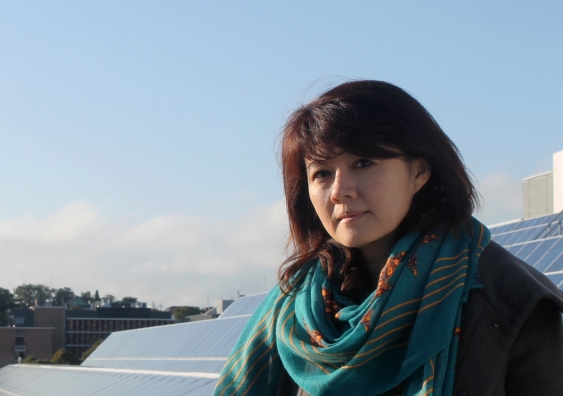Scientia Professor Rose Amal of the UNSW School of Chemical Engineering researches and publishes prolifically in the fields of fine particle technology, photocatalysis, and functional nanomaterials. Even to most people working in photovoltaics, her work would seem arcane. And yet, UNSW has described her work's “profound implications for solar and chemical energy conversion applications such as … generating renewable hydrogen economically and sustainably.” And Amal herself is a wonderfully plain speaker.
When she was awarded the prestigious 2021 Chemeca Medal by the Australian and New Zealand Federation of Chemical Engineers last week, Amal described her research in recent years as focused on “harnessing solar energy to produce chemicals and fuels, such as hydrogen.”

Image: UNSW
Her LinkedIn feed is bursting with congratulations on the award, which specifically recognizes her research into catalysts for efficient energy conversion.
“Rose Amal, you continue to teach, learn, and inspire new generations of engineers and scientists. And with research that the world badly needs. Well done and congratulations to you,” posted Ian Phillips, general manager at Photon Water Australia, part of the Photon Energy Group.
Research papers she has contributed to represent the chemical bedrock on which future sustainability is being built. Or as the abstract of one 2021 paper explains, its findings “are valuable to solid-state electrochemical energy storage technologies that require high-efficiency charge transport.”
In January, Amal contributed to a breakthrough paper – “A hybrid plasma electrocatalytic process for sustainable ammonia production” – that describes a process of producing green ammonia from air, water and solar energy without the emissions or demands on energy and infrastructure made by the traditional Haber-Bosch method of ammonia production.
“The current way we make ammonia … produces more CO2 than any other chemical-making reaction,” said co-author Emma Lovell at the time. “In fact, making ammonia consumes about 2% of the world’s energy and makes 1% of its CO2 … We can use electrons from solar farms to make ammonia and then export our sunshine as ammonia rather than hydrogen.”
Storage and transport of hydrogen as ammonia will be safer and more economical. As a gas, hydrogen requires an exceptional amount of space for storage unless you liquefy or compress it. “But liquid ammonia actually stores more hydrogen than liquid hydrogen itself,” explained Amal. “And so there has been increasing interest in the use of ammonia as a potential energy vector for a carbon-free economy.”
In February, the NSW Office of the Chief Scientist and Engineer appointed Amal as the head of a consortium made up of researchers from UNSW, several other Australian universities, and the Commonwealth Scientific and Industrial Research Organisation (CSIRO). The remit of their combined NSW Power-to-X (P2X) Industry Feasibility Study is “to grow a new industry that will use cheap excess renewable energy to make fuel, chemicals and feedstocks to power a range of New South Wales infrastructure.”
At the Australian Renewable Energy Zones Conference in May, Amal talked about why using only batteries, a capital-intensive technology, to store renewable energy is a missed opportunity. With the P2X approach of converting excess renewable energy to chemical energy – as hydrogen, ammonia, methanol or hydrogen peroxide – “we can widen the reach of renewable power and repurpose it for use in other sectors while still maintaining stability in the grid,” she said.
These broadly applied chemicals “have historically been made in large, centralised industrial sites where capital costs and emissions are high,” said Amal, adding that they then have to be transported to a point of use.
Exporting Australian sunlight
Amal believes that a significant opportunity for P2X is to supply a new hydrogen export industry. Japan, South Korea and the European Union are among the markets in line for Australia’s green hydrogen.
To advance this potential, Amal is also part of a consortium of research and industry partners, known as HySupply, that is led by UNSW Associate Professor Iain MacGill. It is investigating the feasibility of a renewable-energy-based hydrogen supply chain between Germany and Australia.
Amal, who arrived in Australia from Indonesia 38 years ago to pursue a degree in chemical engineering at UNSW, may have become accustomed to recognition. She has been awarded 2019 NSW Scientist of the Year and has received several prestigious engineering awards.
In the early 1990s, her passion for sustainability was “focused on designing particle and catalyst systems to treat chemical pollutants so that they would not end up in our environment,” she says.
Subsequently, the solar industry got lucky as she swung her skills toward designing nanomaterials for solar and chemical energy conversion applications, including photocatalysis for water and air purification and water splitting and engineering systems for solar processes that use the sun’s energy to generate clean fuel.
“Australia has abundant sunlight and we should do more in harnessing our solar power,” she says.
This content is protected by copyright and may not be reused. If you want to cooperate with us and would like to reuse some of our content, please contact: editors@pv-magazine.com.




By submitting this form you agree to pv magazine using your data for the purposes of publishing your comment.
Your personal data will only be disclosed or otherwise transmitted to third parties for the purposes of spam filtering or if this is necessary for technical maintenance of the website. Any other transfer to third parties will not take place unless this is justified on the basis of applicable data protection regulations or if pv magazine is legally obliged to do so.
You may revoke this consent at any time with effect for the future, in which case your personal data will be deleted immediately. Otherwise, your data will be deleted if pv magazine has processed your request or the purpose of data storage is fulfilled.
Further information on data privacy can be found in our Data Protection Policy.